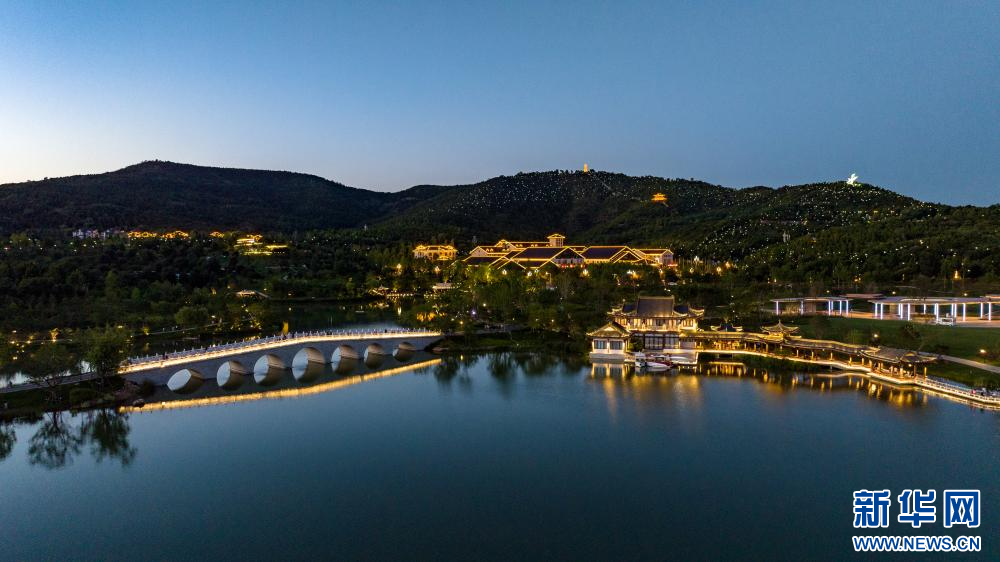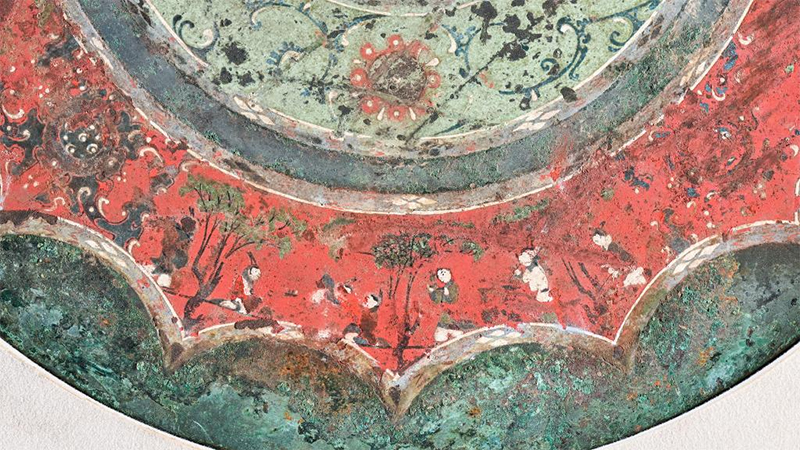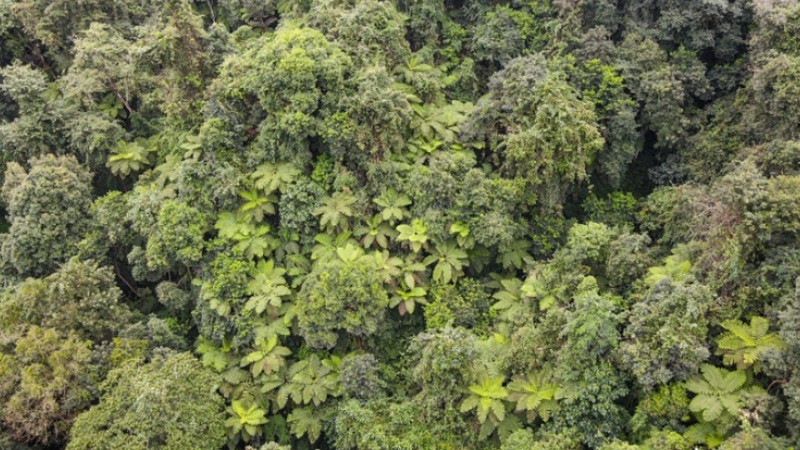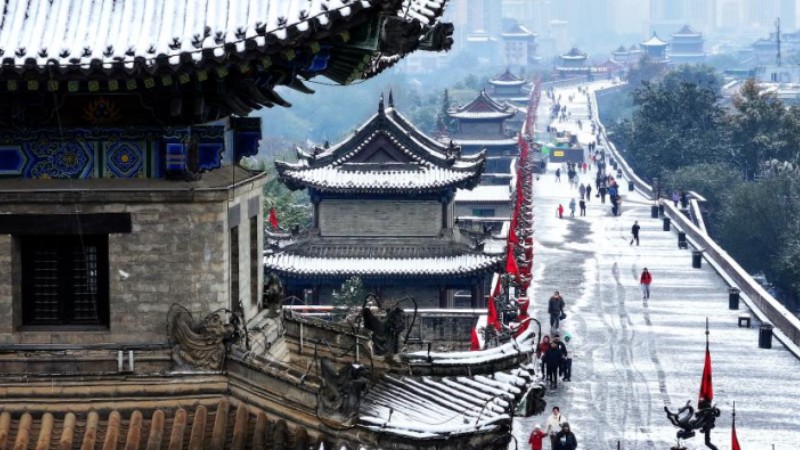Coal-producing city in China's Shanxi advances green transition
Leveraging its natural and cultural resources, Jincheng, a coal-producing city in north China's Shanxi Province, has moved towards advancing its green transition by prioritizing ecological conservation and promoting the integrated development of the culture, tourism, and health care sectors.
Jincheng is home to 72 national key cultural relics protection units, 117 ancient castles, and 150,000 buildings built during the Ming Dynasty (1368-1644) and Qing Dynasty (1644-1911).
Over the years, Jincheng has actively treated coal gangues and restored vegetation. Utilizing the ecological advantages of the Baimasi Mountain forest park, it has built a high-end health and wellness resort covering 20 square kilometers, which directly boosts the development of the culture, tourism, and health care sectors in 21 nearby villages.

Photo shows a demonstration zone for high-end health and wellness resorts in Jincheng, Shanxi Province. (Photo/Xinhua)
By the end of 2022, the city had built 2,202 hectares of green space in its built-up urban areas, with an urban green coverage rate of 47.14 percent. In the first half of 2023, the comprehensive air quality index and concentration of PM10 dropped by 7.9 percent and 12.36 percent compared to the same period last year, respectively.
Making use of its ecological, cultural and tourism resources, Jincheng has built a demonstration zone with a batch of high-quality projects for the integrated development of culture, tourism, and health care as well as rural revitalization along the Taihang No. 1 Highway, said Wu Jianpeng, head of the publicity department of the CPC Jincheng municipal committee. The highway runs from the north to the south of the Taihang Mountains, and links various tourist destinations.
Based on 13 4A-level or higher tourist attractions, the city has merged resources and enhanced standardization and intelligent transformation, Wu added.
Since 2022, the Taihang No. 1 Highway has attracted over 9 million tourist visits and 55,000 people returning home to seek employment or start businesses. It has directly driven the income growth of 76,000 people in 365 villages, and indirectly benefited nearly 400,000 people.
In 2020, Jincheng launched a project to shore up the weak links of its infrastructure in the health care sector, driving the development of the city's culture, tourism and health care sectors.
"We selected 129 beautiful villages and 108 traditional courtyards across the city and turned them into health and wellness tourism destinations," said Xue Mingyao, mayor of Jincheng city.
Jincheng has launched intercity tourist buses connecting it with Zhengzhou, Jiaozuo and Jiyuan cities in central China's Henan Province, as well as Changzhi city in Shanxi.
"We've enhanced tourism cooperation with cities in central China by implementing measures such as ticket concessions," said Wang Dongsheng, director of Jincheng’s culture and tourism bureau.
The official added that the city has continuously optimized the business environment and improved infrastructure to provide quality services for more tourists.
Jincheng has hosted the China Shanxi (Jincheng) Health Care Industry Development Conference for four consecutive years, during which 104 projects were signed with a total investment of 178 billion yuan ($24.6 billion).
"Jincheng has established a supply system for health and wellness products and crafted eight business models. The health care sector is becoming an engine driving our city's green transition," said Wang Zhen, secretary of the CPC Jincheng municipal committee.
Photos
Related Stories
- China has 14.41 million health workers
- Health and wellness industry conference to kick off in N China's Shanxi
- Internet Plus brings nursing service to doorstep
- Health insurance reform to better meet needs of patients: NHSA
- China delivers multi-level health care for elderly during holiday season
- Fragmented U.S. health care system causes preventable deaths, unnecessary costs: new study
Copyright © 2023 People's Daily Online. All Rights Reserved.









